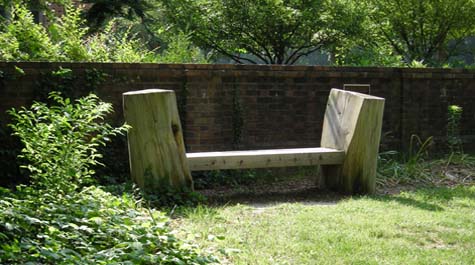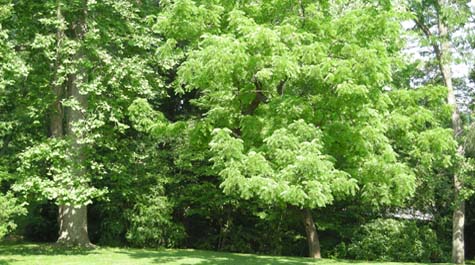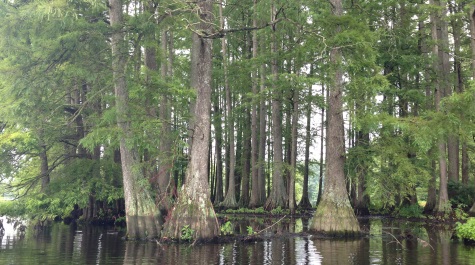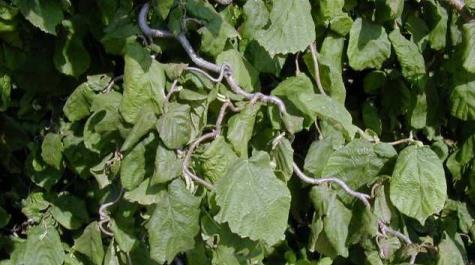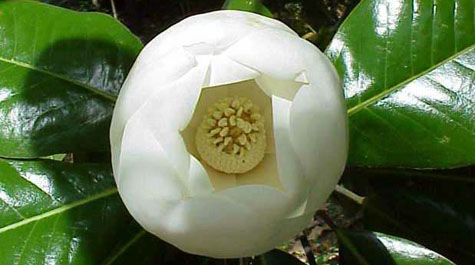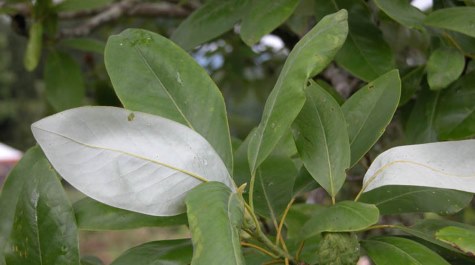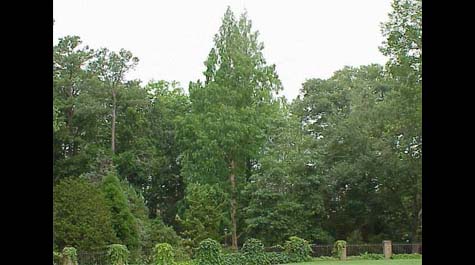Crim Dell Meadow
The Crim Dell Meadow extends just west of the Tyler and Sunken Gardens, and holds some surprising features and high diversity. As you enter the meadow from the Tyler garden on the sidewalk, northern white cedar (Thuja occidentalis) and fragrant sumac (Rhus aromatic ‘Gro-Lo’) are among several new plantings mixed in with more Japanese cleyera. Also note near the fence of the sunken garden a full specimen of a scarlet buckeye (Aesculus pavia). Just west of the west brick wall of the Tyler Garden are two large coast redwoods (Sequoia sempervirens) that were shipped to the College from California around Cape Horn and planted as cuttings in 1953. The northern tree lost a large limb during a 2002 windstorm; and the southern tree lost its top during Hurricane Isabel in 2003. Adolph Hight, then director of facilities management, saved the debris with the idea of shaping something both practical and unique. His hope was realized in the bench now placed between the trees – the result of a collaborative effort involving Professor Pease (Art and Art History), students Emily Fraser ’07 and Nathan Burgess '08, senior carpenter Mike Wood, and College arborist Matthew Trowbridge.
This area also contains a spectacular Japanese full moon maple (Acer japonicum 'Aconitifolium') that survived two recent relocations required for new construction! Other plants on this north end include a weeping willow (Salix babylonica) and native specimens of black walnut (Juglans nigra), eastern red cedar (Juniperus virginiana) and loblolly pine (Pinus taeda). On the western end, flanking the woods is an unusual double-trunked “tree” consisting of one tulip poplar (Liriodendron tulipifera) and one American sycamore (Platanus occidentalis). Various cultivated species blend in to the western wooded border such as Aucuba (Aucuba japonica), chaste tree Vitex agnus-castus, eastern hemlock (Tsuga canadensis) and camellias. Most notable are two dawn redwoods (Metasquoia glyptostroboides). Until plant explorers located living trees in 1946 in Szechuan, China, this species was thought to have been extinct for more than 13 million years. Seeds they collected and sent to the Arnold Arboretum at Harvard University were subsequently made available to botanists worldwide, and Professor Baldwin obtained some during a 1948 visit to the national botanical garden of Belgium. He shipped them back to Professor Bernice Speese, who germinated and nurtured the specimens planted here. A smaller tree, also grown from seeds distributed by the Arnold Arboretum, is located in the at Duke University. If you know the bald cypress tree, note how similar the two species appear.
Exploring around the meadow near the dawn redwoods you can find other interesting specimens including Harry Lauder's walking stick (Corylus avellana 'Contorta'), Chinese juniper (Juniperus chinensis), a boxwood collection, cypress (Chamaecyparis sp.), river birch (Betula nigra), sweet bay (Magnolia virginiana), and flowering dogwood (Cornus candensis).
Find the bronze statue titled “Spring” (shown in the images on this page) and exit the meadow on the adjacent small trail. Go south and pass over the Crim Dell bridge.















